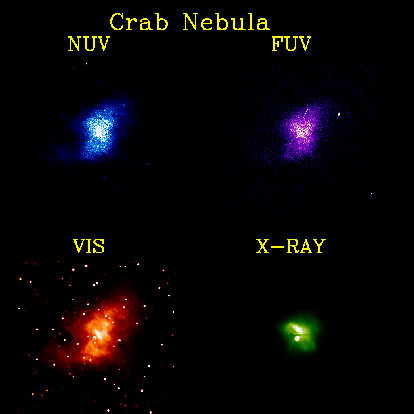
|
Explanation: This is the mess that is left when a star explodes. The Crab Nebula is so energetic that it glows in every kind of light known. Shown above are images of the Crab Nebula from visible light to the X-ray band. NUV stands for "near ultraviolet" light, FUV means "far ultraviolet" light, and VIS means visible light. In the center of the Crab Nebula lies the powerful Crab pulsar - a spinning neutron star with mass comparable to our Sun but with the diameter of only a small town. The pulsar expels particles and radiation in a beam that sweeps past the Earth 30 times a second. The supernova that created the Crab Nebula was seen by ancient Chinese astronomers and possibly even the Anasazi Indians -- in 1054 AD, perhaps glowing for a week as bright as the full moon. The Crab still presents mysteries today as the total mass of the nebula and pulsar appears much less than the mass of the original pre-supernova star!
|
January February March April May June July August September October November December |
| |||||||||||||||||||||||||||||||||||||||||||||||||||||||
NASA Web Site Statements, Warnings, and Disclaimers
NASA Official: Jay Norris. Specific rights apply.
A service of: LHEA at NASA / GSFC
& Michigan Tech. U.
Based on Astronomy Picture
Of the Day
Publications with keywords: pulsar - Crab Nebula
Publications with words: pulsar - Crab Nebula
See also:
- APOD: 2025 August 24 Á The Spinning Pulsar of the Crab Nebula
- M1: The Incredible Expanding Crab
- Supernova Remnant CTA 1
- APOD: 2024 July 23 Á The Crab Nebula from Visible to X Ray
- M1: The Crab Nebula
- APOD: 2023 March 20 Á M1: The Expanding Crab Nebula
- APOD: 2023 January 15 Á M1: The Crab Nebula from Hubble
